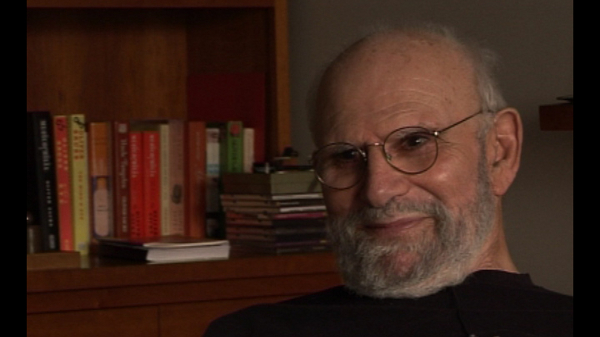NEXT STORY

The Island of the Colourblind
RELATED STORIES

NEXT STORY

The Island of the Colourblind
RELATED STORIES


|
Views | Duration | |
|---|---|---|---|
| 251. Amnesic Gary | 180 | 07:27 | |
| 252. Naming the book An Anthropologist on Mars | 289 | 01:13 | |
| 253. Glad to be - roughly - healthy at an old age | 234 | 03:34 | |
| 254. Hoping my work has helped others | 173 | 00:25 | |
| 255. The offer of a remote neurological adventure | 179 | 02:18 | |
| 256. Arriving in Guam: Are the cycads responsible for Lytico-bodig... | 336 | 01:19 | |
| 257. The epicentre of the Lytico-Bodig disease | 298 | 03:42 | |
| 258. First finding out about the colour blindness of Pingelap | 197 | 02:01 | |
| 259. The Island of the Colourblind | 188 | 01:59 | |
| 260. Buying a house while swimming round City Island | 1 | 741 | 02:41 |


When I… so I spent a week with John on the road, a week so extraordinary that I felt this must be filmed. It’s insufficient to describe this. These people, this situation has to be seen. And there was another odd thing, somehow I got babbling to John about something I’d heard, namely that there might be a place in the world or an island where there was a congenital total colour blindness. And John said, 'Yes, I know the place. It’s Pingelap', and he said that he had worked for some years on Pohnpei which was the large volcanic island... the larger volcanic island surrounded by coral atolls and that he had seen some of these people with congenital achromatopsia. So this was a second thing which excited me. And I talked with Chris Rawlence, who had written the libretto of The Man who Mistook his Wife for a Hat and was now doing a series of films with me, and I said, we have to go to Guam again and also we have to go to Pingelap.
And so I returned the following year, this time with my ophthalmological friend, Bob Wasserman, and my totally colour-blind colleague, Knut Nordby. And we spent time on Guam and time on Pingelap and Pohnpei.
Oliver Sacks (1933-2015) was born in England. Having obtained his medical degree at Oxford University, he moved to the USA. There he worked as a consultant neurologist at Beth Abraham Hospital where in 1966, he encountered a group of survivors of the global sleepy sickness of 1916-1927. Sacks treated these patients with the then-experimental drug L-Dopa producing astounding results which he described in his book Awakenings. Further cases of neurological disorders were described by Sacks with exceptional sympathy in another major book entitled The Man Who Mistook His Wife For A Hat which became an instant best seller on its publication in 1985. His other books drew on his rich experiences as a neurologist gleaned over almost five decades of professional practice. Sacks's work was recognized by prestigious institutions which awarded him numerous honours and prizes. These included the Lewis Thomas Prize given by Rockefeller University, which recognizes the scientist as poet. He was an honorary fellow of both the American Academy of Arts and Letters and the American Academy of Arts and Sciences, and held honorary degrees from many universities, including Oxford, the Karolinska Institute, Georgetown, Bard, Gallaudet, Tufts, and the Catholic University of Peru.
Title: First finding out about the colour blindness of Pingelap
Listeners: Kate Edgar
Kate Edgar, previously Managing Editor at the Summit Books division of Simon and Schuster, began working with Oliver Sacks in 1983. She has served as editor and researcher on all of his books, and has been closely involved with various films and adaptations based on his work. As friend, assistant, and collaborator, she has accompanied Dr Sacks on many adventures around the world, clinical and otherwise.
Tags: Pingelap, Pohnpei, The Man Who, Guam, Christopher Rawlence, Robert Wasserman, Knut Nordby
Duration: 2 minutes, 1 second
Date story recorded: September 2011
Date story went live: 02 October 2012